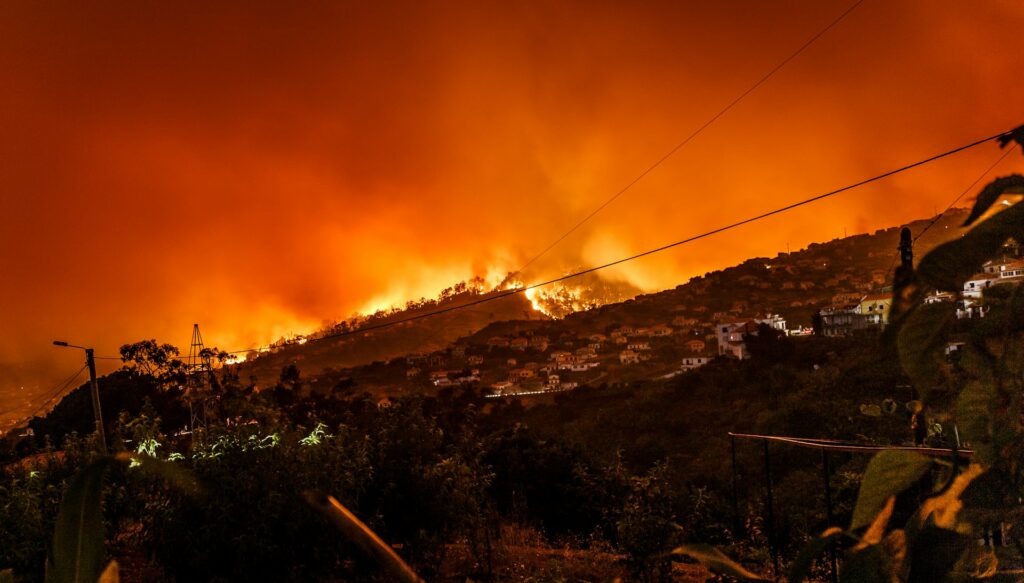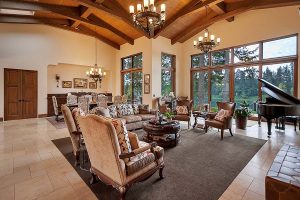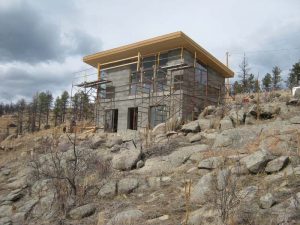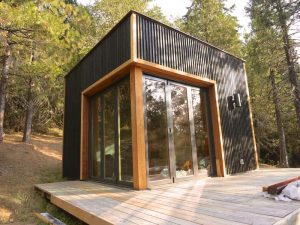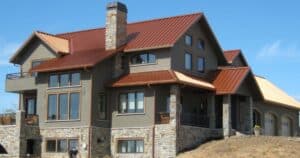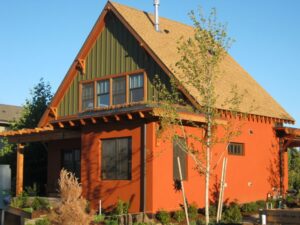The growing threat of wildfires makes it more important than ever to build homes that can withstand heat and flames. Whether constructing a new home from scratch or upgrading an existing structure, understanding which materials offer protection against fire is key to safeguarding your investment and your safety. This guide explains the differences between fire-resistant, non-flammable, and fire-retardant materials, then dives into a comprehensive fire-resistant building materials list designed to help home builders make informed choices. If you’re designing or building with fire resistance in mind, this guide is packed with practical, tested options, without compromising aesthetics or performance.
Fire-Resistant vs. Fire-Retardant vs. Non-Flammable: What’s the Difference?
Before diving into specific materials, it’s important to clarify a few terms. Fire-resistant materials are those that are inherently able to withstand high temperatures and resist ignition. These materials do not catch fire easily and maintain their structural integrity during a blaze. Fire-retardant materials, on the other hand, are not naturally fire-resistant but have been treated—usually chemically—to slow the spread of flames and reduce fire risk. Finally, non-flammable materials are substances that simply won’t ignite under standard fire conditions.
In construction, these distinctions matter greatly. Fire-resistant and non-flammable materials are often used in critical components like exterior walls, foundations, and roofing, where long-term fire exposure is possible. Fire-retardant materials are commonly found in framing lumber, certain types of insulation, or surface coatings where added protection is necessary but full fireproofing isn’t feasible. Understanding how each of these applies to the structure helps ensure you’re using the right material in the right place—from framing and insulation to siding and interior finishes.
Fire-Resistant Building Materials List
When selecting fire-resistant materials, it’s important to understand their performance under heat, ease of use, environmental impact, and suitability for DIY projects.
1. Faswall® Insulated Woodchip-Cement Blocks
A standout choice for innovative, sustainability-focused builders is Faswall® Insulated Woodchip-Cement Blocks. Faswall is a unique ICCF (Insulated Composite Concrete Form) building system composed of mineralized wood and cement. Unlike traditional ICF systems made with petrochemical foams, Faswall is all-natural and exceptionally eco-friendly. Its fire resistance is one of its most valuable attributes, thanks to its high mineral content and insulating thermal mass. Not only does it resist ignition, but it also slows heat transfer, making it ideal for wildfire-prone regions. Designed for walls and foundations, Faswall can be used in virtually any building application and is beloved by both DIYers and forward-thinking architects for its simplicity and long-lasting durability. For a detailed comparison with traditional ICF systems, see Faswall’s ICF comparison guide.
2. Concrete
Concrete is another highly fire-resistant material used widely in foundations, load-bearing walls, and slabs. It does not burn, and its dense structure offers excellent thermal protection.
3. Brick & Mortar
Brick and mortar construction, with its naturally flame-retardant qualities and high thermal mass, is also effective at slowing the spread of heat and flame.
4. Steel
Steel is a non-combustible structural material that performs well under high temperatures, though it requires fireproof coatings or insulation to prevent warping in extreme heat.
5. Fire-Rated Glass
Fire-rated glass, typically treated to resist cracking and heat penetration, is increasingly being used in windows and doors in high-risk areas, offering a modern solution for fire safety without compromising natural light.
6. Gypsum Board (Drywall)
For interior protection, gypsum board (or drywall) is commonly used. Its fire-resistant properties stem from the chemically bound water inside, which helps delay flame spread. Fire-rated versions are especially effective in ceilings and partition walls.
7. Fiber Cement Boards / Siding
Similarly, fiber cement siding, made from a blend of cement, sand, and cellulose fibers, is widely praised for not igniting or emitting toxic fumes, making it a common choice for exterior walls in fire-prone areas.
8. Stone & Cast Stone
Natural materials also play a key role in fire-resistant construction. Stone and cast stone are naturally non-combustible and highly durable, often used for both aesthetics and function on exterior walls, landscaping features, and chimneys.
9. Stucco
Stucco, a cement-based plaster, acts as a protective barrier that seals out embers and resists ignition, making it another favorite in fire-prone climates.
10. Mineral Wool Insulation
When it comes to insulation, mineral wool stands out as both fire-resistant and non-toxic. It can endure high temperatures while also offering excellent thermal and sound insulation.
11. Intumescent Coatings
For additional fireproofing, intumescent coatings can be applied to materials like steel or wood; these coatings expand under high heat to form a protective barrier that insulates the underlying surface.
12. Fire-Retardant Treated Wood (FRTW)
Fire-retardant treated wood (FRTW) is a viable solution when using wood in areas where fire codes are more stringent. It’s commonly used for framing, trusses, and roof assemblies in projects that still want to benefit from wood’s structural flexibility.
13. Aerated Concrete (AAC)
Aerated Autoclaved Concrete (AAC) is another excellent fire-safe material. Similar to Faswall blocks, these lightweight concrete blocks are both fire-resistant and insulating, making them desirable in modern sustainable builds.
14. Calcium Silicate Boards
Calcium silicate boards—commonly used in commercial construction—offer high strength and resistance to fire, particularly in ceiling and wall systems designed for passive fire protection.
Best Fire-Resistant Materials: Choosing the Right One for Your Project
Selecting the right fire-resistant materials comes down to several key factors: location, project scope, budget, and intended use. For homes in wildfire zones, robust exterior materials such as fiber cement siding, stucco, and natural stone offer the most protection against flying embers and prolonged heat exposure. Full-scale new builds may benefit from comprehensive systems like Faswall blocks or AAC, which provide structure, insulation, and fire safety in one package. Renovation projects may be more focused on interior solutions like fire-rated drywall, mineral wool insulation, or treated wood for existing framing.
Budget and sustainability are also crucial considerations. Faswall is particularly valuable for those looking to strike a balance between environmental responsibility and top-tier fire protection. Its longevity, non-toxic nature, and ease of use make it a smart investment for both professional and DIY builders.
What is the Best Fire-Resistant Material?
There is no single “best” fire-resistant material—only the best one for your specific needs. For many homebuilders seeking both performance and sustainability, Faswall stands out as a leading choice. It combines fire resistance with durability, energy efficiency, and ease of installation, making it ideal for anyone, from first-time DIYers to experienced green builders. For other applications, materials like fiber cement, gypsum board, or mineral wool provide effective and affordable fire protection in targeted areas of the home.
Ultimately, choosing the right materials means understanding your region’s fire risk, your building goals, and your budget. The more informed your decisions, the safer and more resilient your home will be.
Ready to build smarter, safer, and more sustainably?
Learn more about how Faswall’s naturally fire-resistant building system can transform your next project.
Explore Faswall’s Fire-Resistant Benefits Here

